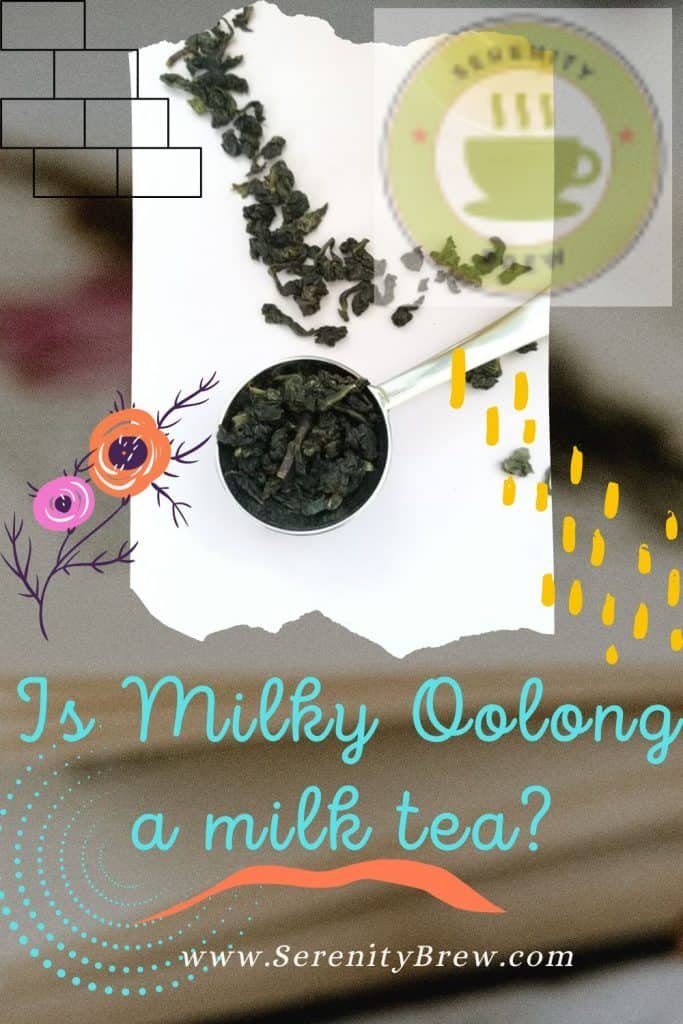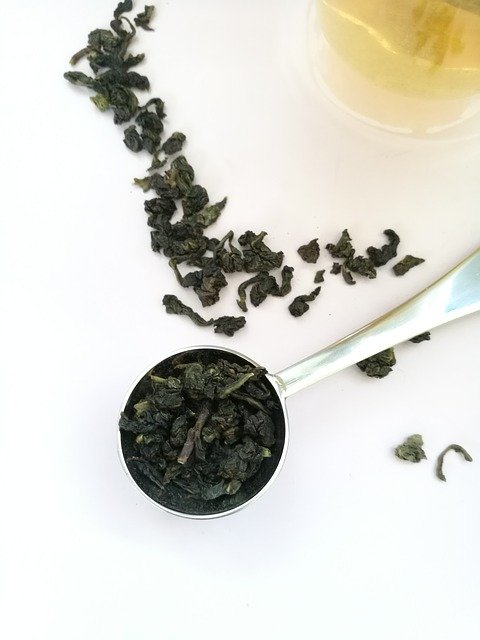
No! Milky Oolong is a wonderful variety of blue tea or Oolong
A tea with milk is a typically Anglo-Saxon infusion where a “little cloud” of milk is added to a freshly brewed tea.
There is a variety, which consists of infusing the tea directly into the milk. Many years ago when we heard about this tea, we thought it was an Anglo-Saxon trend of drinking oolong tea with milk.
But let’s get down to business.
What is Milky Oolong?
Milky Oolong is a variety of blue or Oolong tea that is characterized by having a milky flavor and aroma. Oolong is not a black tea or a green tea
An Oolong can end up with more black tea characteristics or more green tea characteristics depending on the producer’s decision as to the oxidation time.
This is what makes it a wonderful class of tea! Well, depending on the tea garden, the quality of the leaf and how oxidized it is (between 8% and 85%), one flavor or another is obtained.
By the way. Calling it blue tea is an invention of the lords of Marketing. the color of the teas (green, black or red) comes from the color of the strand in China or the color of the tea in Europe. The “gentlemen of Marketing” went for the simplest. What color is left free?: blue.
Origen del Milky Oolong
As you know, everything related to the origins of tea is full of fantastic myths and legends. If the origin of the Oolong already has its poetic legend of the dead deer that you can read on the blog Tea Oolong or blue tea, the Milky Oolong could not be less.
The shape of the Oolong is like semi-open balls and there is a myth that the Milky Oolong was born when Chinese or Taiwanese women squeezed the leaves very hard and caused it to release a kind of milk that gives it its characteristic flavor.
I have to admit that this legend is very weak, since it seems that the tea leaves release milk… But it is what it is. What we must differentiate between are the natural Milky Oolong from those produced during the tea transformation process.
The Milky Oolong between those whose flavor obtain directly from the flavor of the leaves, from which we obtain their flavor during the process of oxidation and drying of the leaves.
As you can imagine , “natural” Milky Oolongs are scarce, very difficult to obtain and therefore have high prices.
Within the “natural” Milky Oolong can classify them into:
Taiwanese Origin
In the early 1980s they developed a varietal type of Camellia Sinnesis called Jin Xian. This variety of tea can be grown at higher altitudes, and the yield is about 20% higher compared to traditional tea varieties. These circumstances made it one of the most popular varieties among tea growers in Taiwan and Thailand.
Its flavor is light, creamy and flowery sometimes compared to milk, This tea is a true wonder and very difficult to find since it is produced very little and is consumed mostly in Taiwan. Being a tea whose origin dates back to the 80s, it has a very recent history and that is why it is normal that you do not find bibliography about it.
Chinese Origin
It is produced in the Wuyi mountains in China, they are characterized by their notes of sweet milk, Why does this flavor occur? Apparently, a few days before the harvest, the temperature in these beautiful mountains drops rapidly, causing the flavor of the tea to alter and give it hints of sweet milk. You will also not find this tea so easily as it is very scarce and appreciated.
Milky Oolong obtained during processing: This rarity from China, specifically from the province of Fujian, is distinguished from other Oolong by the way it is produced. This process is what makes this tea special. The leaves, just after withering, still moist, are heated with milk vapor. instead of water vapor. Later they are rolled by hand and dried.
This light vaporization permeates the entire leaf with aroma and flavor, making it a fabulous Milky Oolong.
Preparation of Milky Oolong tea
The traditional Chinese method of making is known as gongfu cha, where gongfu (same as ‘kung fu’, just spelled differently) roughly means ‘hard work’ and ‘cha’ is ‘tea’. Gongfu cha is sometimes described as “the Chinese tea ceremony”, and although it is not as formal as the famous Japanese ceremony, it has its roots.
They do this in a very small teapot (traditionally made of unglazed Yixing clay) that is about a third filled with Oolong. The kettle is filled with hot water and emptied immediately, to “wake up the tea” and rinse away all impurities.
Later, they fill it again with water at 90º over the already wet Oolong leaves and let it rest for a very short time (20 seconds to 1 minute) before being poured into small cups to serve. Then it can be filled with hot water repeatedly; the taste of each cup is subtly different from the last, and many people even prefer the second cup to the first.
But don’t worry, if you don’t want to perform the ceremonial rite of Gongfu cha that We have described above, you can prepare it in the following way and you will obtain a fabulous tea:
- Use fresh, pure water
- The ideal temperature is 80 degrees for 3 minutes
- Ideally, you should do it in a teapot or a cup with an amplified filter.
- We do not advise you to add any milk or “little cloud” because the Milky Oolong itself has a milky taste.
We always advises you not to add sweeteners or sugar to teas so that you can fully enjoy its flavor. In this case we insist more so that you can appreciate its dairy aroma. This tea allows you to reinfuse it three times.
Conclusions

Milky Oolong tea is not a milk tea, it is a variety of Oolong
We can say that it is a variety of tea and not a mixture, since it exists under this name Natural Milky Oolong basically from Taiwan or Fujan from China and those created by heating the leaves with milk steam.
The way to prepare them is through “the Chinese ceremony” or Gongfu cha, although you can prepare it in a simpler way with 2 grams per bowl at a temperature of 80 ºC, for 3 minutes.
You can reuse it three times although the intensity of the flavor will be less. Oolong tea has antioxidant properties
